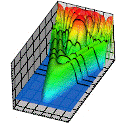Department of Physics and Astronomy: Publications and Other Research

Anthony F. Starace Publications
Document Type
Article
Date of this Version
11-2014
Citation
PHYSICAL REVIEW LETTERS 113 (28 NOVEMBER 2014), 223002 (2014); DOI: 10.1103/PhysRevLett.113.223002
[This Letter was featured in an article on p. 32 of the February 2015 issue of Photonics Spectra; the online version appears here: http://www.photonics.com/Article.aspx?PID=5&VID=125&IID=801&Tag=Tech+Pulse&AID=56939 or is attached below as a Related file]
Abstract
Control of double ionization of He by means of the polarization and carrier-envelope phase (CEP) of an intense, few-cycle extreme ultraviolet (XUV) pulse is demonstrated numerically by solving the six-dimensional two-electron, time-dependent Schrödinger equation for He interacting with an elliptically polarized XUV pulse. Guided by perturbation theory (PT), we predict the existence of a nonlinear dichroic effect (∝ I3/2) that is sensitive to the CEP, ellipticity, peak intensity I, and temporal duration of the pulse. This dichroic effect (i.e., the difference of the two-electron angular distributions for opposite helicities of the ionizing XUV pulse) originates from interference of first- and second-order PT amplitudes, allowing one to probe and control S- and D-wave channels of the two-electron continuum.We show that the back-to-back in-plane geometry with unequal energy sharing is an ideal one for observing this dichroic effect that occurs only for an elliptically polarized, few-cycle attosecond pulse.
Article from Photonics (Feb. 2015)
Included in
Atomic, Molecular and Optical Physics Commons, Elementary Particles and Fields and String Theory Commons, Plasma and Beam Physics Commons


Comments
© 2014 American Physical Society. Used by permission.